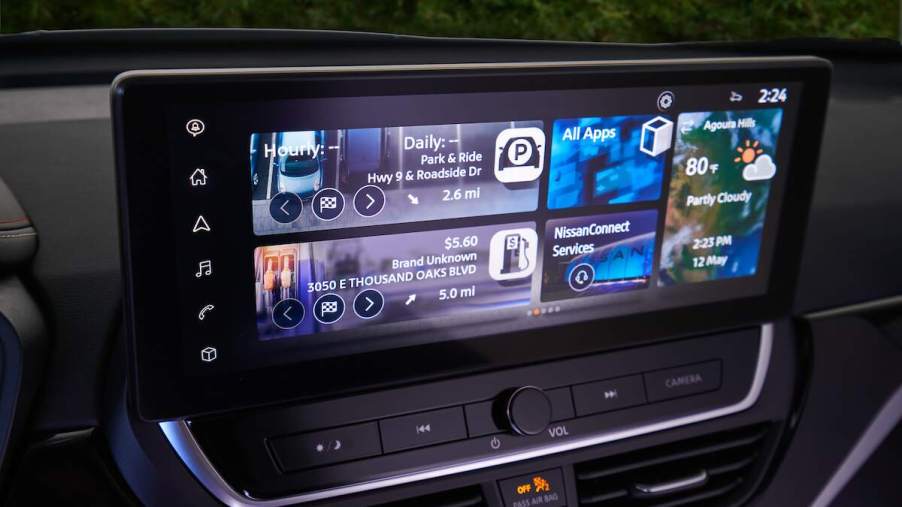
A Simple Explanation for Why New Car Owners Hate the Infotainment Systems
Innovation has certainly led to some pretty incredible advancements in new cars these days. The safety suite technology alone, with 360-degree cameras, rear passenger seat alerts, and automatic parking sensors, is impressive. And even the in-car entertainment factor is elevated with all the intuitive touchscreens and tech-infused infotainment.
All of these improvements are intended to simplify the driving experience, making it easy to be safe, stay connected, and enjoy the ride. But a recent study suggests those who own new cars aren’t all that jazzed about the high-tech infotainment systems. In fact, trends point to car buyers downright hating some of today’s infotainment systems altogether. We dove in to discover why.
Study suggests car owners aren’t fans of infotainment
New cars, with their sleek designs, interior layout, and technologically advanced infotainment, aren’t as satisfying as they once were. JD Power’s recent July study, measuring the Automotive Performance, Execution, and Layout (APEAL) of today’s vehicles, suggests that there has been a year-over-year decline in vehicle owner satisfaction.
This study measures 10 points of ownership experience. And the only factor with any improved satisfaction rates is fuel economy. All other factors have been in decline, including the infotainment systems. As cool and intuitive as these systems are, check out these metrics that say car-buying consumers just aren’t excited about them anymore.
There were some interesting takeaways from the studying including:
- Only 56% of consumers prefer to use their built-in infotainment to play audio, which is down from the 70% in 2020.
- Only 45% want to use their infotainment systems to make phone calls.
- Only 37% want to use the voice recognition features.
- Only 43% want to use their built-in navigation capabilities.
What factors are contributing to this overall sentiment?
When these infotainment systems are supposed to improve the convenience and user experience, why are consumers not resonating anymore? One explanation could be that those buying new cars are getting older.
The younger, tech-savvy market is struggling to afford new cars, perhaps leaving the mature generations in the buying pool. Complicated or complex touchscreens and full menus of available options can be too much to need, get used to, or even want for the older generations.
Of course, there are plenty of older adults who love to learn and use their new car technology. And many do well with these systems. But as this study points out, having to “learn” how to use your new car just isn’t an appealing prospect to most car buyers, regardless of their age.
There’s just something satisfying about physical knobs and buttons
Aside from the possible car-buying age explanation for the decline in satisfaction with today’s infotainment systems, there’s another potential factor. People still love their physical knobs and buttons. There’s something inherently satisfying about dialing in a radio station or pressing a button to skip to the next entry on the screen.
Touchscreens are great, but they’re also hard to see with sun glares. They get smudged with fingerprints, requiring continuous cleaning. And sometimes, trying to touch the right space on the screen while you’re driving can lead to touching adjacent spaces instead, not executing the command you want.
Sharing one screen for cabin temperature, music, phone connectivity, and navigation requires lots of menu changes. And for many consumers, the trusted, old-fashioned knob or button just seems much simpler to operate.
This latest JD Power APEAL study should signal to automakers that car-buying consumers aren’t finding today’s technologically advanced infotainment platforms all that helpful or user-friendly anymore. While innovation in connectivity, navigation, and audio are certainly great advancements, user experiences and customer preferences of today’s most common buyers might warrant a change in infotainment designs.


